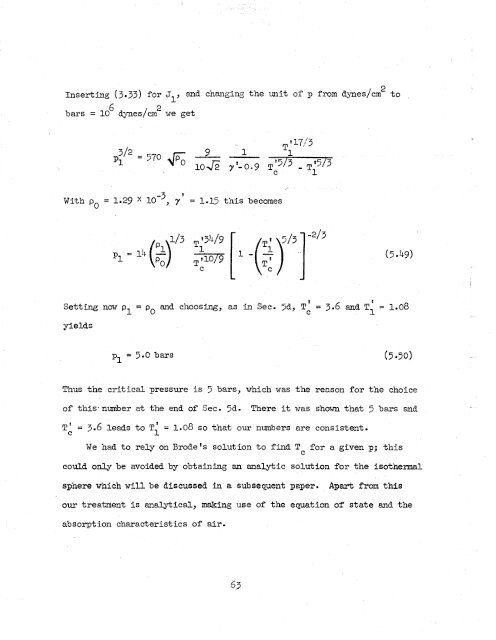Theory of the Fireball
Theory of the Fireball
Theory of the Fireball
Create successful ePaper yourself
Turn your PDF publications into a flip-book with our unique Google optimized e-Paper software.
Inserting (3.33) for JIJ and changing <strong>the</strong> unit <strong>of</strong> p from dynes/cm 2 to<br />
6 2<br />
bars = LO dpes/cm we get<br />
Setting nar p1 = po and C ~ O O S ~ as ~ , in Sec. 5d, Tc 1 = 3.6 and T1 r = 1.08<br />
yields<br />
p1 = 5.0 bars<br />
Thus <strong>the</strong> critical pressure is 5 bars, which was tne reason for <strong>the</strong> choice<br />
<strong>of</strong> this, number at t'ne end <strong>of</strong> Sec. 5d. Tnere it vas shown that 5 bars and<br />
T' = 3.6 leads to Ti = 1.08 so that our numbers are consistent.<br />
C<br />
We had to rely on Brode ' s solution to find Tc for a given p; this<br />
could only be avoided by obtaining an analytic solution for <strong>the</strong> isotneml<br />
sphere which will be discussed in a subsequent paper. Apart from this<br />
our treatment is analytical, making use <strong>of</strong> <strong>the</strong> equation <strong>of</strong> state and <strong>the</strong><br />
absorption characteristics <strong>of</strong> air.
















